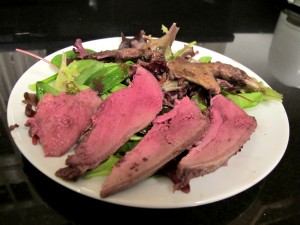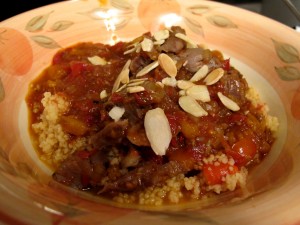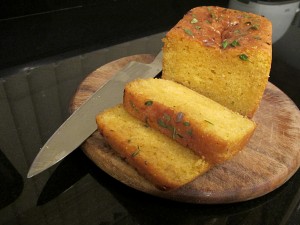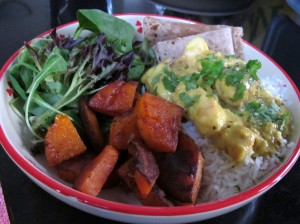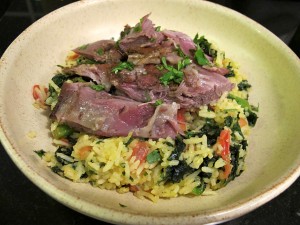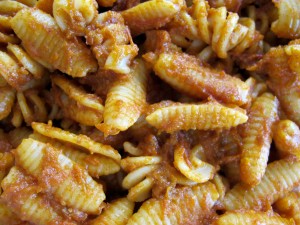The wood pigeon was based on Nigel Slater’s recipe. I cooked it flesh side down for 15 mins with the dial at 175C, then turned it over and grilled the breast to give it some colour. Then I rested it for 5 mins.
Salad dressing for leaves was based on Perfect vinaigrette but we had no red wine vinegar so used balsamic. It was quite sweet but perfect to go with gamey meat.
Lamb tagine based on Jamie Oliver’s lamb shank and tomato tagine but didn’t add potatoes. Other adjustments I made were that I didn’t make the onion into a paste, just finely chopped them and the the apricots were chopped into sultana sized pieces and at the end I sprinkled with toasted almonds on top of the lamb. We thought the dish needed more chilli so we sprinkled a few chilli flakes on top at the table. The tagine turned out well, except I only had two lamb shanks so the liquid didn’t cover the two shanks in my casserole dish. So I had to add lots of water so that that the meat was covered while cooking (otherwise it will dry out – I have had this happen before) then I took the shanks out after two hours and left the sauce to reduce down while I removed the meat from the bones. Next time I will definitely make it or anything similar with at least 4 lamb shanks or 3 huge ones.
I made the couscous with chicken stock (Kallo) instead of water and added peppers which had been grilled until skin turned black, then the skin was removed and the peppers were cut up into strips and blanched baby courgette pieces. I also added lemon juice to the dry couscous and veg before adding the stock and it ended up slightly too acidic (I added 2 tsp lemon juice to 250g dry couscous) but it didn’t spoil the meal thankfully. The thick yoghurt with mint (I had no coriander) complimented the ‘sauce’ perfectly.
